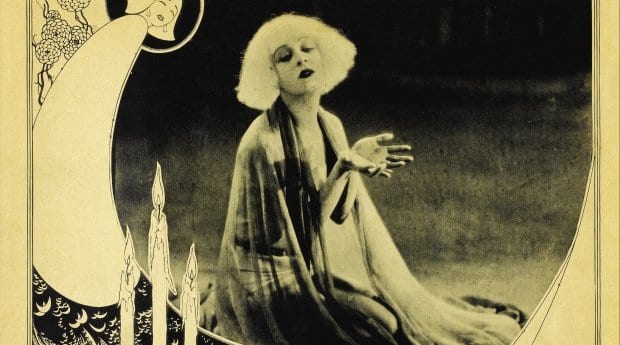Murderous villains. Suicidal misfits. Sexual rebels in need of reform.
During Hollywood’s golden age of cinema, harsh censorship guidelines ensured that queer characters were often ambiguous or depicted in a negative light, and were a far cry from more positive examples of queer sexuality found in modern films and television shows.
A new exhibit and film festival at the Canadian Lesbian and Gay Archives (CLGA) explores this period of American cinema in detail, and curator Sarah Munro sat down with Xtra to talk about what visitors can expect.
Xtra: Tell me a bit about the Code, Read exhibit. What led to its creation?
Sarah Munro: While working on a prior CLGA exhibition, 2014’s Sex Lives and Videotape, I collected stories from LGBTQ-plus community members about the VHS-era films that most impacted the way in which they saw, and subsequently presented, themselves on screen. VHS technology was groundbreaking in that it enabled people to both consume and create moving images in such an accessible way. Many of the films the respondents chose were positive, affirming examples of queerness on screen, but several of the selections were beyond what I’d anticipated. They were older films, many of which I wouldn’t have necessarily identified by the presence or absence of queer themes. These were Hollywood classics that, despite their longstanding mainstream popularity, remained deeply hurtful in either their depiction or omission of non-normative gender roles and sexualities. To me, those films warranted a second look and the chance to discuss how and why their legacy is problematic.
How were the different films in the program selected? Did they meet specific criteria?
The screenings are a series of double features that fit within one of four genres: drama, comedy, thriller or cult classic. To me, these genres, above others, address the roles that queer characters have historically fulfilled. They are the martyrs, the sight gags, the villains and the misfits. These are the stereotypes that come up again and again.
By pairing pre-Code films with Code-era classics, we hope to highlight the differences between an uncensored and censored creative environment. This is not to say that pre-Code films “got it right,” but they certainly had more creative freedom to take different approaches. Despite the inherent limitations of the Code, we’ve endeavoured to choose films that cover a wider range of queer experiences. You will see references to race and social class. You will see lesbian and bisexual and transgender plot lines. You will see not only queer characters, but also openly queer actors and filmmakers.
What film ephemera will you have on hand?
The film ephemera will be limited to promotional posters and facts and insider anecdotes from golden-age films you may not have realized were queer. There will also be clips from early short films, including the first appearance of subversive same-sex interaction on film, William KL Dickson’s The Dickson Experimental Sound Film/The Gay Brothers (1895).
Do you have any personal memories of interacting with negative queer stereotypes in film and television growing up?
I am a huge fan of Alfred Hitchcock and have been since I was a child. I remember being so disappointed to realize that characters I had originally interpreted as strange or unsettling — they all had some quality that I couldn’t quite put my finger on — were actually queer. Characters like Mrs Danvers in Rebecca or Bruno in Strangers on a Train were not just unhinged — they were also queer. As masterful a director as he was, I thought, even Hitchcock bought into the stereotypes. Of course, I realize that many of his best characters were villains and that he incorporated queer themes more often than most filmmakers of the period, but it still doesn’t sit right with me.
Do you feel that there are still negative stereotypes and portrayals of queer people in contemporary films and television shows?
Hollywood is quick to pat itself on the back for being progressive, but I would argue that depictions of queerness have not changed as radically over the course of film history as recent pictures would have us believe. Queer characters still fulfill many of the same functions: all too often they are either the comic relief or the cautionary tale. I will concede that queer characters and themes are perhaps getting more screen time, attracting more mainstream actors and garnering more awards. However, characters like Benedict Cumberbatch’s Alan Turing in The Imitation Game and Jared Leto’s Rayon in Dallas Buyers Club are still tragic figures. Their fates remain the same.
What screening are you most looking forward to?
I look forward to exposing our audience to some of the series’ lesser-seen silent films, including Salomé and A Florida Enchantment. I would argue that films like these require a greater investment on the part of the audience: they demand the viewers’ patience and imagination more so than most current Hollywood cinema. But for everything they demand of you, they also give back. They’re not as polished and PC as contemporary films, so there’s lots of room for discussion around the culture that birthed them and the strides that filmmakers have made in the years that followed.
Films such as these are an important part of the CLGA’s collection. As historical artifacts, they offer us a glimpse into how ideas and identities of queerness were mediated by the big screen. We can see how such stories and portrayals fit into and fuel larger social (mis)conceptions about LGBT people.
Code, Read
Sun, Feb 8–Sun, March 8
Canadian Lesbian and Gay Archives
34 Isabella St

 Why you can trust Xtra
Why you can trust Xtra


